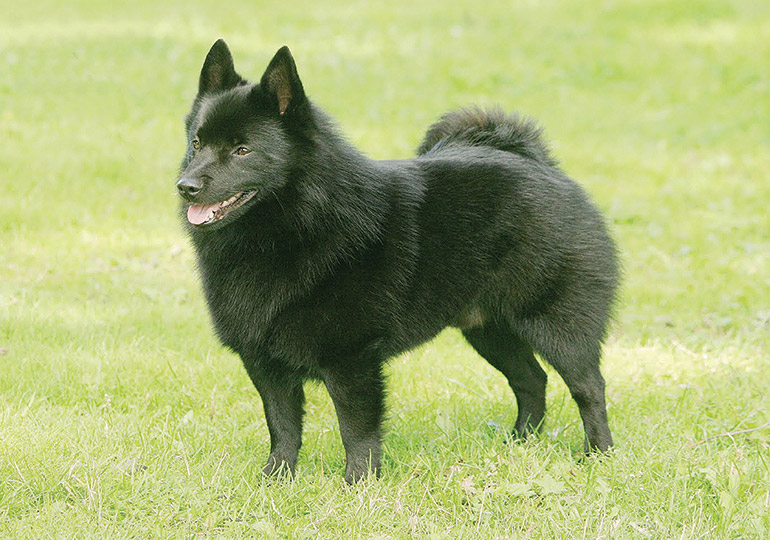Breeds
Schipperke

GROUP 7 - NON SPORTING
History
Schipperkes have been around for a very long time. Relics in Belgium dating back to the 14th Century depict a sheepdog with a similar look to the Schipperke. The Schipperke was taken into the house when peasants were not allowed to have anything other than a working dog, however, like most small dogs, they excelled at ratting and guarding.
Throughout history, bakers, barge operators, shopkeepers, farmers and peddlers used the Schipperke to chase and kill rats and mice on their premises, as well as guarding against intruders.
Today many kennels are successfully breeding Schipperkes as pets as well as for showing and the sports of Agility and Obedience. The breed is assured a healthy future with breeders found in most states.
Appearance
The Schipperke makes a striking first impression. A small, compact dog, it’s broad across the shoulders with narrow hips, creating a unique outline.
The Schipperke’s coat is usually jet black, but can be cream or other whole colours. It has an alert, sharp foxy expression which takes in the whole head including eye shape and ear placement.
Characteristics
The Schipperke is full of energy, intensely alert and lively. Schipperkes actually hunt like cats, so they don't take off with amazing speed but with stealth. Whether the Schipperke is inside or out, it has a harsh, short top coat, that repels water, with a soft undercoat of Spitz breeds. A good shake will see it nearly dry after a soaking.
The Schipperke also has a cape of longer hair to frame its head and neck, falling to the shoulders and down under its chest and culottes, covering the sturdy back legs. A brush weekly, or every second day when shedding which is seasonal usually twice a year, is all that is needed to keep its coat in top condition.
Health
Schipperkes are robust, hardy dogs with few health problems or conditions and are known to live well beyond their teen years.
Epilepsy is occasionally found in a small percentage of Schipperkes, however, appears to not be a problem in Australia at the present time, with the importation of different bloodlines into Australia.
Mucopolysaccharide type IIIB (MPS IIIB) is a degenerative disease affecting the neurological system. There is no effective treatment for infected dogs, but no cases of the disease have been recorded in Australia.
As tests have identified that dogs here carry the mutated gene, breeders are encouraged to test their breeding stock before mating. With care and cooperation it is possible that no Schipperke in Australia will be affected by MPS IIIB.
Suitability
The Schipperke has survived the centuries by adapting to the times. While the breed has a great deal of energy, it can also spend quiet times with the family. Schipperkes also have an affinity with horses and also love to be around children.
It constantly talks to you, expressing its voice through ‘huffs’, and will sharply warn you of strangers. But it also loves company and uses different tones to let you know when friends or family have arrived.
Exercise-wise, the Schipperke enjoys walking and swimming. Travelling in the car is a treat, perhaps harking back to its travels in barges or peddlers’ carts.
Its intelligence means the Schipperke learns easily and is exceptionally agile, so is valued in Agility competitions. The breed is so versatile that some have been known to work as both assistance dogs for the deaf and herding dogs to round up sheep.
Reference: The Schipperke Association of NSW
In Conclusion
Now you know a little about the Schipperke, you may think that this is the dog for you. Before you make a decision, please make contact with the breed club or your State controlling body for purebred dogs. They will be able to give you information about available puppies and also suggest dog shows where you can see the breed and speak to breeders. In this way you will gain a better perspective of the Schipperke and its needs, and whether this breed would suit your lifestyle.
Breeders
Sorry, there are currently no breeders advertising for this breed. If you are a registered Dogs SA breeder and wish to advertise here please create an advertisement here.

